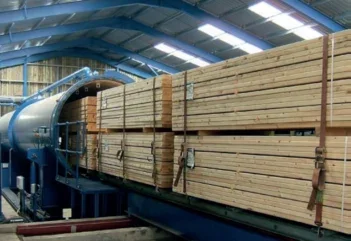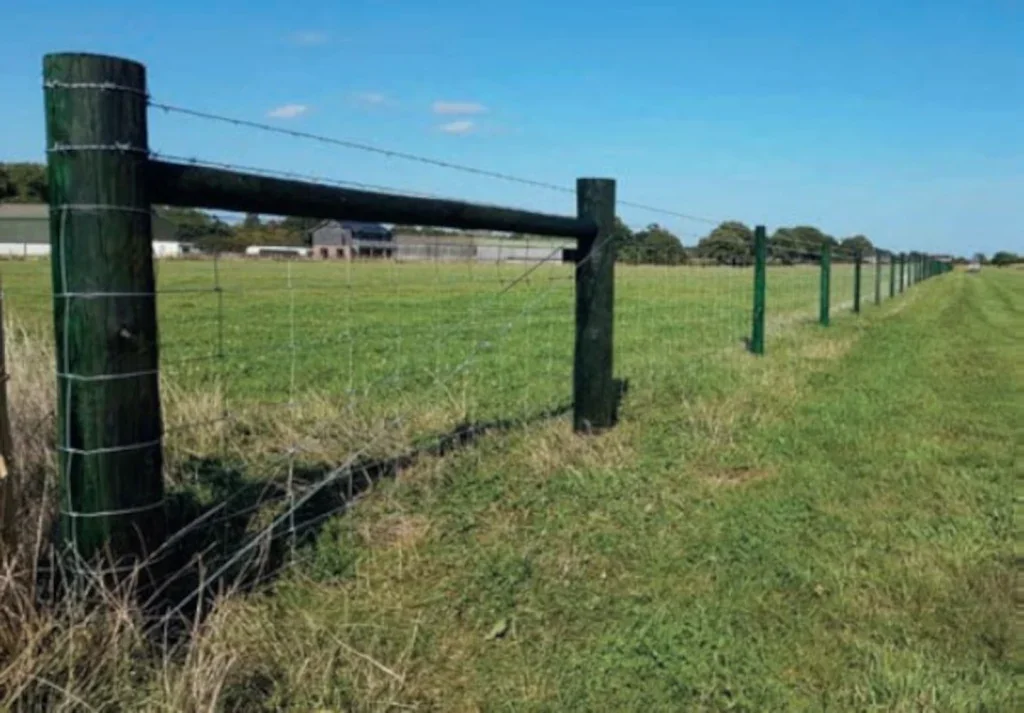
The timber treatment sector has been a big focus point for the wood industry in recent years, with product innovation, changes in regulation and educational campaigns to improve specification of treated wood products.
Andy Hodge, marketing director for the wood preservatives manufacturer Arxada (producer of Tanalith treated timber), believes it is a turning point for treated timber. Having worked in the sector for over 40 years, he sees how the sector needs to continue to evolve to meet market demand, champion timber’s sustainability credentials and navigate Europe’s increasingly tightening regulations on active ingredients.
Mr Hodge, an executive board member of the European Institute for Wood Preservation (WEI-IEO), reported first on recent market conditions.

“During Covid we had two good years of industry demand, before a market correction. Last year we had a particular challenging time due to weather; particularly construction and agricultural markets have been condensed because of the wet conditions. However, overall trading has been at a reasonable level. There has been a lot of treated timber sold and there will be again this year.”
He predicted 2025 treated timber trading in the UK to be similar to 2024, with a bigger uplift coming in 2026.
Mr Hodge updated on an exciting WEI-IEO treated wood advocacy project.
“We’re working together and gathering resources in an advocacy project aimed at making a very clear message towards European governments,” he said.
“The strong message is that treated wood is a strong decarbonised substrate which locks up the carbon in the wood for longer. ‘Positioning wood preservation as a strategic enabler of decarbonisation in the wood and forestry economy’ is the name of the strategy and several meetings have already been held to formulate the strategy.”
Mr Hodge said European forestry practices were already very sustainable, so the additional wood preservation benefits of making timber products last longer added to the reduced carbon footprint over the products life time and fitted in with the European Green Deal project.
“This Roadmap will be a really excellent piece of work,” he added. “Service life classes will come into it and will help take away some of the myths people have about preservative treated timber.”

Arxada itself is still a relatively new business but draws on a long history stretching back over 100 years, taking in the Hickson and Arch names during periods of amalgamation. The over arching goal for the Arxada specialty chemicals business is better science to solve the world’s toughest preservation challenges. Its Wood Protection division has heavily invested in its internal R&D team to drive product development, especially in the context of the everincreasing stringent regulations relating to active ingredients.
Europe, Mr Hodge says, represents a market area which is more highly regulated than any other area globally in terms of wood preservation. But the silver lining is it allows the company to be on the cutting edge of treatments to stay ahead of the regulation curve.
Mr Hodge highlights the situation with creosote – an old preservation technology that has been restricted to industrial applications, such as railway sleepers and utility poles, due to identified risks to the environment and to human health.
Arxada has an alternative hot oil-based product – Tanasote – developed over 10 years ago and which has BPR authorisation in 23 European countries. Designed to offer a service life similar to creosote (40+ years), Tanasote combines organic biocides and copper in a mobile oil formulation.
Mr Hodge says the risk of creosote being banned even from industrial applications is a very real possibility, so having alternatives available for wood’s continued use in demanding applications is essential to support the timber industry.
In the EU and Northern Ireland, creosote’s active substance approval was extended in 2023 to October 2029 for railway sleepers and utility poles, but not for highway and equestrian fencing, animal security fencing and agricultural tree stakes.
In Great Britain, the HSE has been evaluating creosote’s extension, with a consultation exercise conducted in autumn 2024 and a decision expected early 2025.
The consultation also gathered information about the availability of suitable alternatives to creosote.

“We have Tanasote as a modern twist on an old classic which can protect against a potential loss of markets for wood,” said Mr Hodge. “We must continue to be driving forward. If we don’t there are other substrates that will capitalise, such as metal and concrete, which will seek to take market share. It’s very important to be keeping wood alive and taking the opportunities we have.”
The timber treatments sector, he added, needs to lobby government and advocate where regulation is stifling innovation. Wood preservatives, says Mr Hodge, should be recognised as decarbonising technologies and should be fast tracked through BPR authorisation processes, not held up for five years-plus as they currently are.
On its current pathway, by 2030 there would likely be more significant regulatory changes affecting many used active ingredients across the industry.
Further Arxada developments include the next generation version of Tanalith E which will be a “game changer”, says Mr Hodge, in the next decade, and a highpressure metal-free Tanalith for Use Classes 1-3, a modern solution to potentially future proof the market should copper – the workhorse of the treatments sector – face future regulation scrutiny or raw material market scarcity.
A surface application metal-free system for dipping and spraying has also been developed, suitable for engineered wood products, such as LVL, glulam, CLT and joinery woods.
“All of these next-generation wood preservation technologies will keep wood as a sustainable material of choice for decades to come,” Mr Hodge concluded.





